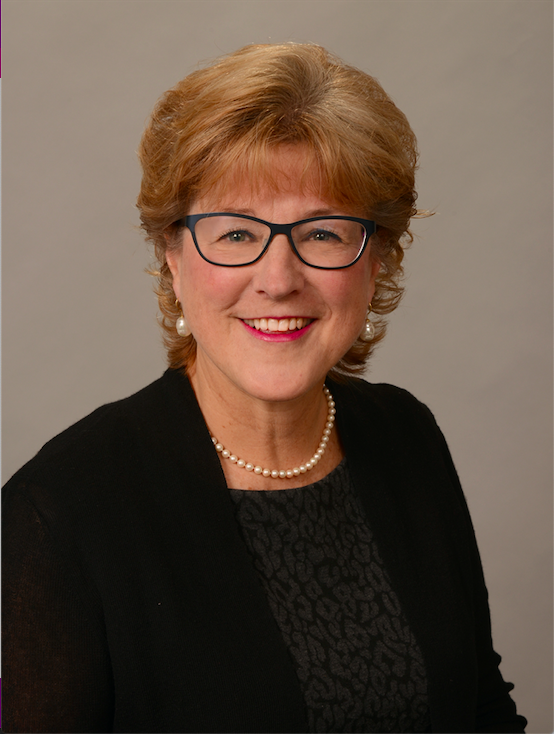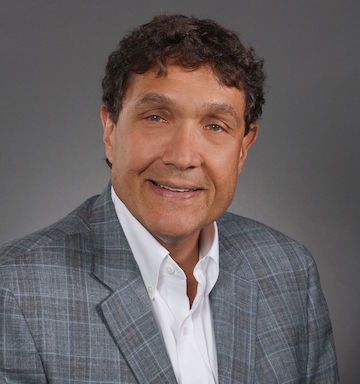Article
Dr Peter A. Lio: “Explosion of New Treatments” for Atopic Dermatitis
Author(s):
Atopic dermatitis is a common disease that has seen an explosion of new treatments in the last decade, explained Peter A. Lio, MD, clinical assistant professor of pediatrics and dermatology, Northwestern Feinberg School of Medicine.
In the last 5 or 6 years, there has been an explosion of new treatments for atopic dermatitis that are much better than the older treatments some patients might be used to, said Peter A. Lio, MD, clinical assistant professor of pediatrics and dermatology, Northwestern Feinberg School of Medicine.
The disease is incredibly common with a lot of health issues, he told The American Journal of Managed Care® (AJMC®), but a number of other conditions may need to be ruled out first.
In part 1 of his interview, Lio discusses diagnosis of atopic dermatitis, comorbidities, and management of pediatric and adult patients.
AJMC®: How common is atopic dermatitis? Who does it tend to affect? Are there certain risk factors that people might be more predisposed to it? And what type of comorbidities do you see in atopic dermatitis patients?
Lio: Atopic dermatitis is actually incredibly common. Estimates are as high as 15% and even you'll see 20% of children having it. For adults, it can be somewhere between 2% and as high as 10% of adults having atopic dermatitis. Depending a little bit on where you're asking the question, how you're asking the question, which demographic in particular, you can get very, very high numbers. This is an incredibly common condition.
Some of the risk factors that we see—in fact maybe the most important one—is urbanization. When people are in urban developed areas, they have a significantly higher risk than if they're living a more rural life. There are a lot of questions that come with that. What is going on here? Are there pollutants in the environment? Is it something about diet and lifestyle? Is it something that we don't have? For example, we know people who are living a lot closer to nature, they tend to, for example, have a lot of parasites. It seems that those parasites, which can be a plague for those people—it's not fun to have diarrhea or whipworm or something—but they seem to protect you against allergy. This is another area that's interesting. When people get rid of those parasites and get a more modernized lifestyle, they seem much more likely to develop atopic dermatitis.
Now the comorbidities, things that come along with it, there are 2 major groups. They're the ones that are also allergic, like atopic dermatitis. That would include things like food allergy and asthma and allergic rhinitis and hay fever. That whole group of things. We know there are also some that are nonallergic, and this is a little bit more speculative still. The studies are there, but I feel like the evidence is a little bit less convincing, at least to me at this point. But there are things from as disparate as bone health that people are more likely to have bone disease and fractures, to ones that I think are much more tangible, like mental health issues. We see that all the time where people have more anxiety and depression. And obviously, it's not hard to imagine if your skin is miserable and itchy and uncomfortable and you're not sleeping well, it doesn’t take a big leap of faith to say, "Yeah, I imagine you're pretty depressed and anxious." But they really do seem to be connected.
There are a lot of health issues that can come along with atopic dermatitis, especially these more moderate and severe cases.
AJMC®: What are the diagnostic criteria for atopic dermatitis? What are some other conditions that you're trying to differentiate from?
Lio: Typically, people use what's called the Hanifin and Rajka criteria. This is from Jon Hanifin, MD, and George Rajka, MD, back in the 1980s. It's really a good system. It leaves a lot to the clinician, because it only has 3 major criteria. All you have to have is 3 things—there are a bunch of other criteria that are supportive and helpful—but it has to be itchy, it has to be the characteristic examinious appearance—the morphology of the rash—and it has to be chronic or relapsing. And that really captures it. I think it's really a good clinical way to capture this diagnosis.
But there are things that can look pretty similar and behave pretty similarly, and so we have to sort them out. Some of those things are things like allergic contact dermatitis. If you are allergic to the nickel in your clothing, in your watch band or your jewelry, or the button on your jeans, it basically can make an eczema. It can be itchy and red, and it can come and go, especially depending on what you're wearing and if you get sweaty. That's an important one. Of course, with allergic contact dermatitis, it's a real stinker because not only can it mimic eczema, but it can come along with it. I have some patients that really have both, they have atopic dermatitis in the background and they also have allergic contact dermatitis. So, we're trying to sort through all that.
Another one is one called cutaneous T-cell lymphoma. In older adults, it's more common in particular, but it's still a very rare disease. It can be one of the things that can mimic intractable eczema. I inherit these patients that are red and scaly and miserable and uncomfortable, and they fail a lot of treatments. And one of the first questions I have to ask is, “Are we sure it's atopic dermatitis?” And one of the things we have out is cutaneous T-cell lymphoma.
There are more things that are on the list too. Things like scabies, if somebody pet has scabies infestation, it sure looks like chronic eczema, and that's something we rule out. For more localized disease, even things like irritant contact dermatitis for hand washing and harsh soaps or cleansers or contacting something that's irritating to the skin, and even things like fungal infection. There are a number of things we're keeping on the list. We want to make sure. And the first is always reaffirming that diagnosis and reassessing if people are not responding the way you'd expect.
AJMC®: What are some important educational points for patients and families with atopic dermatitis?
Lio: There are some key pieces of education we really want everybody to know. The first is that it's not contagious. And as crazy as that sounds to those in the know, there are many patients who are embarrassed or ashamed and sometimes—especially kids at school—will say, “Get away from me, I don't know what's on your skin.” It's not a contagious disease.
The second piece is that while it is chronic, it doesn't necessarily mean it's forever. Whole life is a little bit different than chronic because it may—for some patients, it really does seem to affect them throughout their entire life—but other people, they may have it for some number of months or years, and then they go through a phase where they're much better. I don't want people to feel like they're dooms just because they have some eczema going on.
The third piece is that there are amazing treatments, and it's not all the same treatment. I get some patients who maybe had seen a number of people 15, 20 years ago and said, “They all told me the same thing. They all gave me the same prescription and it didn't do much. Or it did, but I couldn't keep using it because it's not safe to keep using.” Well, I will tell you that in the past 5 or 6 years, there's been an explosion of new treatments. All new, exciting mechanisms from biologics to new oral medicines to new topicals. It is an exciting time in atopic dermatitis.
AJMC®: How does management in pediatric patients differ from management in adults, if at all?
Lio: The truth is I think we tend to manage everybody pretty similarly, at least in terms of the form, the overarching approach. Now for kids, especially smaller kids, we're going to be using gentler medicines. We're going to have a much lower threshold, we're changing things up if we're concerned about any safety issue. And some of the medicines that are most powerful they tend to be reserved for adults. But there are cases in kids where they're so uncomfortable and life is so bad that we do need to use them.
But the general approach is the same. Good education, we want to avoid known triggers. Things that clearly irritate or bother the skin, we want to try to get rid of those things. We want to do gentle bathing practices and good moisturization. We know that moisturizers for the vast majority of patients, and I would always say not for all. I do have some patients who find trouble with certain types of moisturizers in particular. But usually, if we can find one that feels good on the skin, most patients really do say, “Wow, when I put moisturizer on, I do better. I have fewer flareups, I have less itch, my skin feels better.” Because in a way we're helping to support and strengthen the natural skin barrier, which is one of the key aspects of this condition. Not only is it inflammatory and itchy, but we know the skin barrier is damaged. I often call it leaky skin. Water gets out too easily, and allergens, irritants, and pathogens can get in. By putting a moisturizer on, we help push back on a major area. That's always step 1.
Some people are lucky, that's all they need. I have some patients it's not usually a patient who's been referred to me, maybe it's their sibling the little brother, little sister has a milder case, and they say, “Why don't we just try those basic things?” And then the mom calls me and says, “Hey, they're doing great. They don't need you.” I'm like, “Perfect. I’ve got plenty of patients, I don’t need any more business. I don't want any more patients if I don't have to. I want to make everybody better and send them on their way to go and do good things in the world.”
But let's say that's not enough. If they come back and they say, “Gosh I'm still pretty uncomfortable,” then we are going to do what's called a reactive approach. And this is, again, the old-fashioned way. It's like, “OK, put a little bit of this medicine on when you need it.” Typically, it will be a topical steroid-type medicine. And again, for milder patients, they might say, “Golly, I just needed to use it a couple days here and there last month but that's it.” And again, I'm happy everyone's happy, it's really safe to use it that way. But what if that's not enough? And what if they say, either, “I did it and it didn't get better”—uh oh, then we need to do something much better—or more commonly they say, “Doc, I did it, but you said don't use it every day. And last month I really needed it every day almost.” And I'll say, “Uh oh, that's a red alert. We don't want to be using this medicine every day.” Then we often talk about this idea of a proactive therapy or maintenance plan. That would be to use the strong medicine a couple days, maybe a week at most, when you need it, then once you're better, I'm going to put you on a nonsteroidal, gentler medicine to use to help prevent a flareup. And we have a few options here. This could be one of the calcineurin inhibitors like tacrolimus or pimecrolimus. It could be the phosphodiesterase-4 inhibitor, crisaborole. We even have a newer medicine that just came out last year, which is a topical Janus kinase inhibitor [JAK], ruxolitinib. We might have them do that for a little bit to keep those spots at bay. Then if they flare up again, they can use the strong stuff for a little bit again. So we can balance it that way.
If that's still not enough or not working, then we go to our final phase, which is where we think about the more systemic or whole-body treatments. And that includes light therapy, that includes the biologic medicines—we have 2 now. We have dupilumab and we have tralokinumab. And we also then have our oral JAK inhibitors, and we have 2 of them on the market in the United States. There's a third available in other parts of the world, but here we have abrocitinib and upadacitinib. So those are great. Then we also still have the legacy medicines, the old-fashioned ones that we really try not to use if we don't have to because I actually think that in general, while they're much cheaper than the newer things, there are many tradeoffs, and they're not really approved for this. They've never really been studied in the same level of rigor. That would include cyclosporine, methotrexate, azathioprine, and mycophenolate mofetil, and of course prednisone. But we really try to avoid prednisone, because we know that, while it can give you a quick fix and people feel so much better. Sometimes they come back with a vengeance, and it's really, really hard to manage. And so, I'm biased because I have a whole clinic full of patients who had a lot of prednisone exposure and are really angry and miserable, because it's actually made things worse. But that's why we're so sensitive to that issue.




